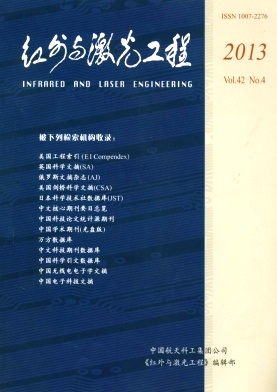Li Meihua, Zeng Zhi, Shen Jingling, Zhang Cunlin. Numerical simulation of defects depth quantitative measurement in pulsed infrared nondestructive testing[J]. Infrared and Laser Engineering, 2013, 42(4): 875-879.
| Citation:
|
Li Meihua, Zeng Zhi, Shen Jingling, Zhang Cunlin. Numerical simulation of defects depth quantitative measurement in pulsed infrared nondestructive testing[J]. Infrared and Laser Engineering, 2013, 42(4): 875-879.
|
Numerical simulation of defects depth quantitative measurement in pulsed infrared nondestructive testing
- 1.
Beijing Key Laboratory for Terahertz Spectroscopy and Imaging,Key Laboratory of Terahertz Optoelectronics,Ministry of Education,Department of Physics,Capital Normal University,Beijing 100048,China;
- 2.
Institute of Physics and Electronic Engineering,Chongqing Normal University,Chongqing 400047,China
- Received Date: 2012-08-11
- Rev Recd Date:
2012-09-15
- Publish Date:
2013-04-25
-
Abstract
Quantitative measurement of defect depth is an important application of pulsed infrared nondestructive testing. The calculation principle of peak second derivative of the temperature decay curve in the log scale was analyzed based on one-dimensional heat conduction model. The stainless steel sample which has six flat bottom holes with same diameters and various depths at the back surface was used. Ansys was used to simulate the process of pulsed infrared nondestructive testing. The depth of defects were calculated by method PSDT. The results of Ansys and pulsed infrared nondestructive testing were compared and analyzed, which indicate that the Ansys model in accordance with the experiment. This research provides theoretical basis for the quantitative study of infrared nondestructive testing.
-
References
|
[1]
|
Xun Wang. Pulse-echo thermal wave imaging of metals and composite[D]. US: Wayne State Univ, 2001. |
|
[2]
|
|
|
[3]
|
|
|
[4]
|
Wang Xun, Jin Wanping, Zhang Cunlin, et al. Actuality evolvement of infrared thermal wave nondestructive imaging technology[J]. Nondestructive Testing, 2004, 26(10): 497-501. (in Chinese) 王迅, 金万平, 张存林, 等. 红外热波无损检测技术及其进展[J]. 无损检测, 2004, 26(10): 497-501. |
|
[5]
|
|
|
[6]
|
Li Guohua, Wu Lixin, Wu Miao, et al. Current status and applications of infrared thermography[J]. Infrared and Laser Engineering, 2004, 33(3): 227-230. (in Chinese) 李国华, 吴立新, 吴淼, 等. 红外热像技术及其应用的研究进展[J]. 红外与激光工程, 2004, 33(3): 227-230. |
|
[7]
|
|
|
[8]
|
Tao Ning, Zeng Zhi, Feng Lichun, et al. Thermal effusivity measurement of subsurface heterogeneous materials using pulsed thermography[J]. Infrared and Laser Engineering, 2011, 40(11): 2098-2103. (in Chinese) 陶宁, 曾智, 冯立春, 等. 采用脉冲红外成像法的表面下暗藏物蓄热系数的测量[J]. 红外与激光工程, 2011, 40(11): 2098-2103. |
|
[9]
|
Li Yanhong, Jin Wanping, Yang Danggang, et al. Thermal wave nondestructive testing of honeycomb structure[J]. Infrared and Laser Engineering, 2006, 35(1): 45-48. (in Chinese) 李艳红, 金万平, 杨党纲, 等. 蜂窝结构的红外热波无损检测[J]. 红外与激光工程, 2006, 35(1): 45-48. |
|
[10]
|
|
|
[11]
|
Sun J G. Analysis of pulsed thermography methods for defect depth prediction[J]. J Heat Transfer, 2006, 128(4): 329. |
|
[12]
|
|
|
[13]
|
Park W J, Jenkins R J, Butler C P. Flash method of determining thermal diffusivity, heat capacity, and thermal conductivity[J]. J Appl Phys, 32(9): 1679-1684. |
|
[14]
|
|
|
[15]
|
|
|
[16]
|
Liu Wenxia. The simulation and analysis of infrared non-destructive testing by using ANSYS finite element software[D]. Beijing: Capital Normal University, 2010. (in Chinese) 刘文霞. 基于ANSYS有限元软件的红外无损检测模拟及分析[D]. 北京: 首都师范大学, 2010. |
|
[17]
|
Carosena Meola, Giovanni Carlomagno, Luca Giorleo. Geometrical limitations to detection of defects in composites by means of infrared thermography[J]. Journal of Nondestructive Evaluation, 2004, 23(4): 125-132. |
-
-
Proportional views

-









 DownLoad:
DownLoad: